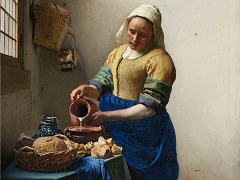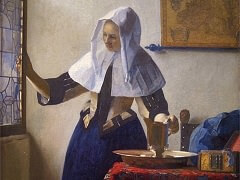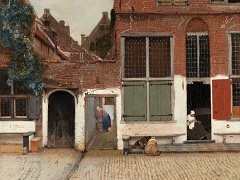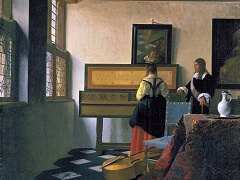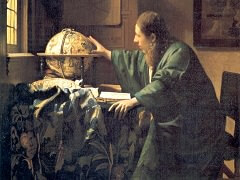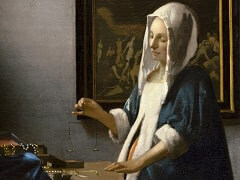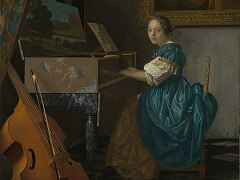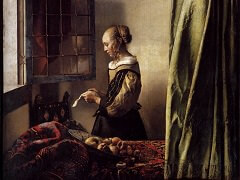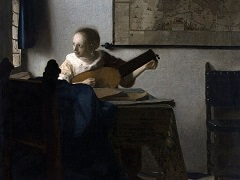Woman in Blue Reading a Letter, 1663 by Johannes Vermeer
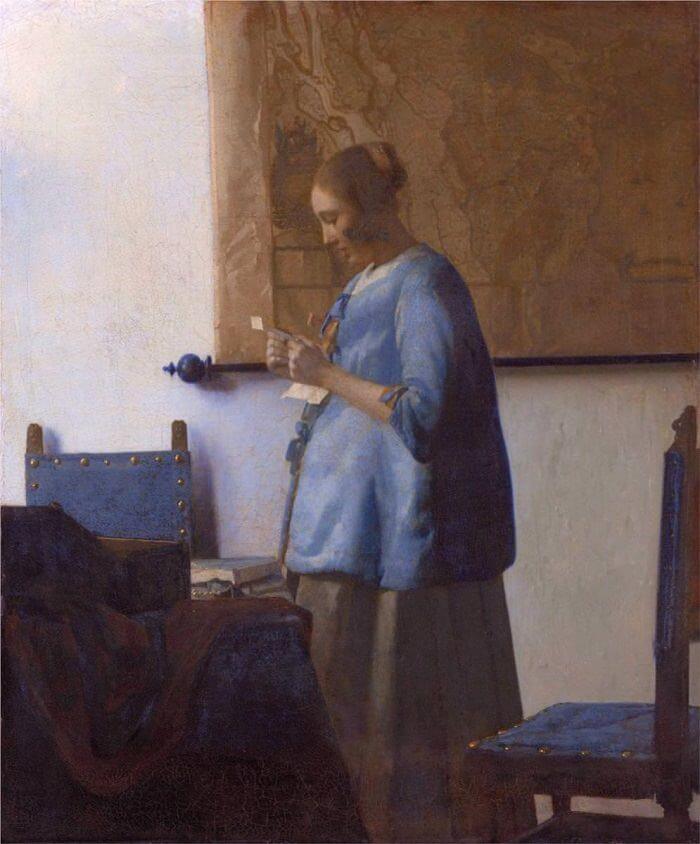
Vermeer conceived many of his paintings around letters, capturing the sense of expectancy elicited by these intimate communications. Here, Vermeer conveyed the depth of the young woman's feelings through her tender expression. She, with lowered eyes and half-opened mouth, firmly holds the unfolded letter in both her hands while tightly clasping her arms to her side. Immersed in her private world, she is unaware of the presence of the viewer, who, as though coming unexpectedly upon an intimate scene, instinctively holds back, reluctant to intrude.
Although the painting depicts but a fleeting instant in this woman's life, Vermeer extends the moment, lending great dignity and significance to the scene. To achieve this result he suppressed the narrative, providing little more than a few intriguing hints about the woman's relationship with her absent loved one: a map on the rear wall, perhaps alluding to travel; the fullness of her shape, possibly indicating pregnancy; and a second sheet of the letter lying on a strand of pearls spread out on the table, presumably because it arrived unexpectedly while she was adorning herself. He also extended the narrative moment compositionally. For example, he positioned the woman before the map so that its dark bar passes directly behind her hands, thus establishing a visual connection between her hands and the horizontal bar that visually locks them in space.



